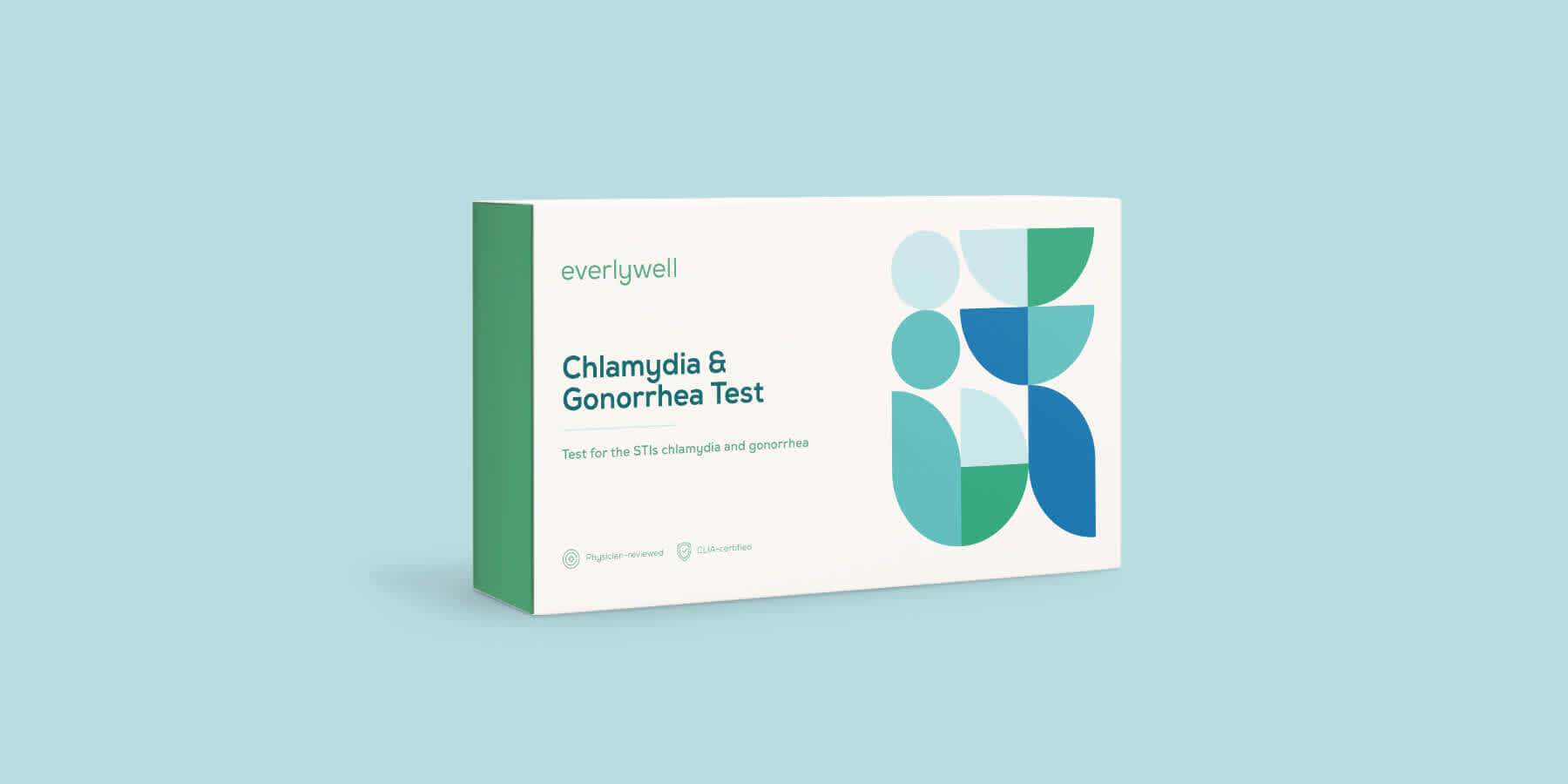
Gonorrhea: Signs and Symptoms
Medically reviewed by Neka Miller, PhD on March 26, 2020. To give you technically accurate, evidence-based information, content published on the Everlywell blog is reviewed by credentialed professionals with expertise in medical and bioscience fields.
Whether it’s painful urination or genital swelling, gonorrhea symptoms in men and women can vary depending on the person. So if you’re wondering what the signs of gonorrhea in men and women are, read on. Here, we’ll cover what gonorrhea infection is exactly, gonorrhea symptoms to look out for, and risk factors. By learning more about this sexually transmitted infection, you can take steps to keep your sexual health safe—like routine testing (which you can easily do with the Everlywell at-home Chlamydia & Gonorrhea Test.
What is gonorrhea?
Gonorrhea is a sexually transmitted infection—also known as an STI—caused by Neisseria gonorrhoeae bacteria. A gonorrheal infection occurs in both men and women and is especially common in young people age 15–24. Of the 1.14 million new gonococcal infections that occur in America every year, about half of them affect this age group. Gonorrhea bacteria tend to infect the urethra, rectum, and throat. It can also affect the cervix in women.
So, how do you get gonorrhea? Contracting the bacterial infection of gonorrhea can occur through vaginal, anal, or oral sex with someone who’s infected. Ejaculation doesn’t have to happen for the gonorrheal infection to spread from one person to another. And even if someone has previously undergone gonorrhea treatment, they can contract the infection again if they have sexual intercourse with an infected partner. Also, if a woman is pregnant and infected with gonorrhea, the infection can be passed along to her baby during childbirth.
Gonorrhea symptoms in men and symptoms of gonorrhea in women differ, and some people experience no noticeable gonorrhea symptoms at all. These people are referred to as asymptomatic carriers—but they are still contagious. Because they don’t have noticeable gonorrhea symptoms, asymptomatic carriers are more likely to spread the disease to their partners through sexual activity.
Symptoms of gonorrhea in women
Many women don’t have noticeable gonorrhea symptoms. If they do, the symptoms can be mild or mimic the symptoms of other infections. Symptoms of gonorrhea in women can resemble yeast infections, other bacterial infections, or urinary tract infections—which is why it’s important to regularly test for STIs like gonorrhea.
Gonorrhea symptoms in women can include abnormal vaginal discharge—particularly a watery, creamy, or slightly green discharge. Women with gonorrhea may also experience frequent urination alone with pain or a burning sensation while urinating. Women can also have spotting between periods or experience heavier-than-usual periods. You might also feel pain during sexual intercourse or feel sharp pains in the lower abdomen. Gonorrhea in women can also cause a fever or sore throat. Symptoms can also include an itchy or sore anus as well as discharge, bleeding, and painful bowel movements.
If a woman isn’t treated for gonorrhea, the infection can damage the reproductive system and increase the risk of getting or transmitting HIV. It can also lead to pelvic inflammatory disease or infertility. In some rare cases, gonorrhea can spread to the bloodstream and joints, which is known as disseminated gonorrhea.
Gonorrhea symptoms during pregnancy
Not all pregnant women who are infected will show gonorrhea symptoms. However, in addition to the symptoms mentioned above, pregnant women with untreated gonorrhea may also experience miscarriage, preterm birth, and ectopic pregnancy (a potentially life-threatening condition). It’s also possible for the infection to be transmitted to the baby during delivery, which can cause serious health complications (like pneumonia) for the newborn.
According to the CDC, pregnant women younger than 25 should get screened for gonorrhea and other STIs at the first prenatal visit. This helps lower the risk of STIs causing pregnancy complications or harming the baby’s health.
Symptoms of gonorrhea in men
Symptoms of gonorrhea in men may not be noticeable at first, and some men may never develop symptoms. Symptoms may include more frequent urination and a discharge or drip from the penis that can be pus-like in appearance and can vary in appearance—white, yellow, beige, or with a green hue. There might be swelling or redness at the tip of the penis, as well as swelling or pain in one or both testicles.
Gonorrhea can also infect the rectum, often as a result of anal sex. In this case, symptoms can include an itchy or sore anus, discharge or bleeding, and painful bowel movements.
Knowing your risk
Remember that many individuals show no gonorrhea symptoms at all. This means they can unknowingly pass the infection to their sexual partners—who can also pass it along to others. But if you’re sexually active, you can lower your risk of gonorrhea by practicing safe sex. Use a condom for protection every time you have sexual contact, and talk openly with your partner about both of your past sexually transmitted infections and treatment. Your risk is also lower if you’re in a mutually monogamous relationship and each of you have tested negative for STIs.
Knowing your risk for gonorrhea can be as easy as taking a test. Tests sometimes include urine samples or a swab of an area that’s potentially affected—like the penis, cervix, urethra, anus, or throat. Home test kits are a great option if you prefer the privacy and convenience of testing at home.
Everlywell offers an at-home chlamydia and gonorrhea test that includes easy-to-follow instructions and everything you need to collect your sample at home. Your physician-reviewed test results can be easily—and securely—viewed online with the device you choose. Gonorrhea and chlamydia are two different STIs, but with this single test you can reliably screen for both.
Related content
What Is Disseminated Gonorrhea?
Gonorrhea and Chlamydia: Knowing the Difference
References
1. Gonorrhea - CDC Fact Sheet. Centers for Disease Control and Prevention. URL. Accessed March 13, 2020.
2. Gonorrhea - CDC Fact Sheet (Detailed Version). Centers for Disease Control and Prevention. URL. Accessed March 13, 2020.
3. Gonorrhea. Mayo Clinic. URL. Accessed March 26, 2020.
4. STDs during Pregnancy - CDC Fact Sheet (Detailed). (Detailed Version). Centers for Disease Control and Prevention. URL. Accessed March 26, 2020.
5. Liu B, Roberts CL, Clarke M, et al. Chlamydia and gonorrhoea infections and the risk of adverse obstetric outcomes: a retrospective cohort study. Sex Transm Infect. 2013;89(8):672–678. doi:10.1136/sextrans-2013-051118
6. Sexually transmitted infections, pregnancy, and breastfeeding. Office on Women's Health. URL. Accessed November 15, 2021.
